How Do Luxury Brands Understand Consumer Behavior Concepts When Coming To Marketing?
- Semily

- Oct 5, 2020
- 8 min read
Updated: Oct 8, 2020
IntroductionThe luxury brand, which carries the values of fashion and innovation, luxury, quality, and know-how, which means “Luxury is what you don’t see, the experience is everything”. This paper base on my working experience as a Fashion advisor from one of the international branches of Chanel, as well as my understanding of Consumer Behavior Theories. For this matter, me myself, have a key role to play in fulfilling the client’s dream. The purpose of the paper is to analyze the luxury market and determine the factors that determine cultural consumption. The paper concludes with a consideration of the theoretical and practical implications such as the Development & Marketing concept, Product Life Cycle, Maslow’s Hierarchy of Needs as well as the acculturation of how Cultural influences on consumption in the market by applying with the marketing strategies.
1. Development & Marketing conceptChanel production concept, the brand has no specific way of marketing products because the brand sells a majority of products from different categories such as ready to wear, leather goods, shoes, jewelry, sunglasses as well as watches. For the purpose of maintaining luxury values, using luxurious and distinctive material, and produce a limited amount of product per collection. The Chanel studio team to the only market to a certain group of people (The market segments for Chanel are mostly women of all ages) from which made their brand name very well known, so a mass amount of production and advertisement is not required. One of the workshop for Chanel DESRUES which located in Paris, the studio whose hire 200 highly skilled employees to work on machines that are able to mold, sculpt, dye, gild, emboss, enamel and polish the most precious jewelry and buttons for Chanel.
Chanel's product concept is much like the company's mission statement and global vision as a whole (Schiffman & Wisenblit 2015, p. 32). The products that Chanel sells are a reflection of Coco Chanel herself, and to make the women of this world be timeless and sophisticated.
Chanel selling concept-The pricing policy of Chanel is based on a number of factors (Schiffman & Wisenblit 2015, p. 33). The strategy is of premium pricing as it is centered on the fine quality of the products as well as the time it takes to make the particular product. It takes an astonishingly long time to complete a Chanel product, because it goes through various processes, such that the end result is of the exceptionally high standard. For example, it required 180 operations to make an iconic bag such as a “hand-woven chain”.
Chanel's societal marketing concept is an enlightened marketing concept that holds that a company should make good marketing decisions by considering consumers' wants, the company's requirements, and society's long-term interests. Foundation CHANEL was created in 2011 to support projects that aim to improve the economic and social conditions of women and adolescent girls around the world. For example, one of the charity projects Chanel does is supporting 12,800 women refugees and migrants direct immediate access to healthcare and protective services in European counties such as France, Italy, Greece. This represents Gabrielle Chanel's life story of a woman who overcomes great obstacles and achieved independence and professional success by her own mean.
2. How is CHANEL using Product Life Cycle Theories in the market?
1. Research & Development- researching and developing a product before it is made available for sale in the market (Mitchell & Clark 2019, pp. 15-16). For example, when “Chanel Gabrielle Bag” it first launched in 2017. During this stage, Chanel is focusing a lot of time and energy on research& testing, consumer testing. Hence, Chanel let all the internal staff as first trial clients experiencing the new collection for a short period of time in real life. Chanel itself uses storytelling in all its forms, especially using the history of its founder the current creative director in order to attract and connect with her audience. It is absolutely crucial for a brand to get positive reviews from the early adopters. Also, the marketing and promotion are at a high - Chanel advertising the product with famous celebrities and held the fashion show 6 months before the collection launching (Chanel’s Spring 2017 data center runway show).
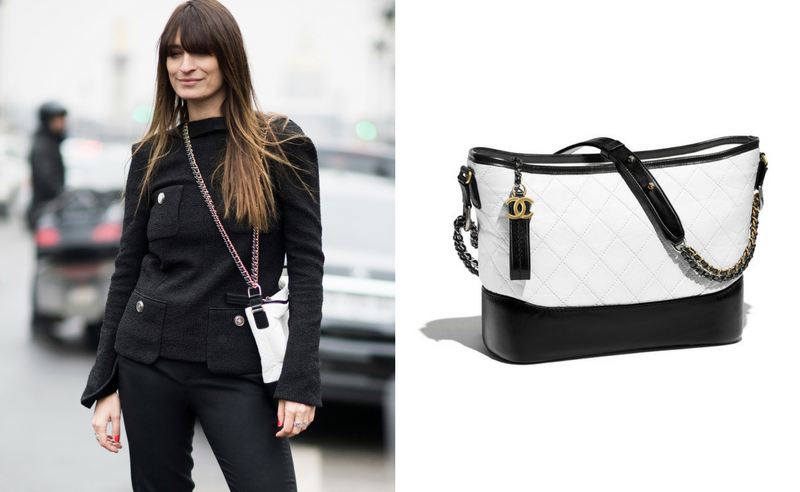
2. Introduction stage-In this stage, the product is being released into the market. Chanel in order to maintain the luxury level it set the new handbag at the regular price basic. The value of the new item costs extremely high for the brand and the sale is pretty low at the beginning. The style with Gabrielle Bag is a new design that Chanel has never had before; that may cause a high failure rate. However, Chanel does well in this stage, this product has less competition because Chanel competitors do not have this style.
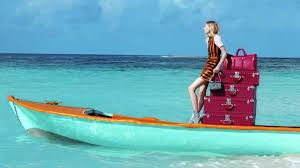
3. Growth stage- (Viral marketing of Loui Vuitton) In this stage, the Chanel Gabrielle bags sale grow at an increasing rate and profit reaches the peak, the price of the product has increased, the quality is maintained and additional feature ( new material and colors used for the same design of handbags) now there are more competitors and large companies may start to acquire small pioneering firms. Chanel Gabrielle bag where they are facing more competitors (LV, Hermes, Dior). For example, Louis Vuitton’s Spirit of Travel collection launched in 2018. The viral marketing of advertisement on YouTube there is more than 2 million people viewed, the inspiration is the quest for freedom and adventure in faraway places. However, in this stage, the advertising of the Chanel Gabrielle bag is become less informative and focuses on attracting consumers’ emotions. The viral marketing of advertisements of Gabrielle bag is a vintage style that presents its theme of classical that intended to attract customers and differentiable from its competitors. In keeping with the general “We Should All Be Feminists” spirit of things. For example, CHANEL’s GABRIELLE bag campaign film starring Kristen Stewart, which has more than a million people viewed on YouTube.
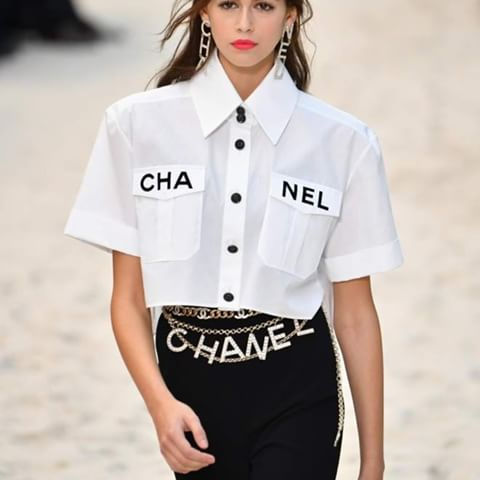
4. Maturity stage-Chanel Gabrielle bags sales are near their highest, but the rate of growth is slowing down. For example, the fashion trend for 2019 is the logo-mania which means that brands put their names in the collections, not the symbol only. Thus, the demand for the Chanel Gabrielle bags at a minimum due to the new fashion trends.

5. Decline stage- if Chanel Gabrielle bags sales start decreasing in 2019 the sales of the Chanel product are continuing to drop in the long-run which means that the product is going to be removed from the market. For example, the Grand Shopping Tote(GST) bags of Chanel had been announced discontinues in the market since 2015.
3. How CHANEL understand Maslow’s Hierarchy of Needs?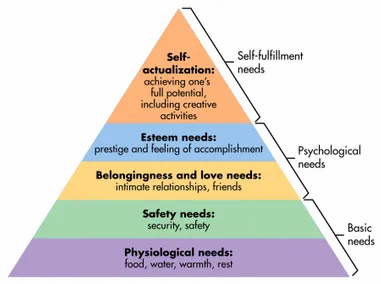
1. Physiological Needs
1. Preparation is 50% of success in sales for Chanel, therefore before the boutique opens, Chanel staff need to prepare the environment to make sure have enough stocks, tidy display as well as staff’s appearance.
2. Offering multiple drinks for their clients such as water, tea, coffee, juices, champagne, all the beverages are prepared by their tea lady.
3. Providing a comfortable sitting area, playing relaxing songs, as well as a large screen for the client watching the latest fashion show just to let all clients enjoy the multisensory atmosphere.
2. Safety Needs
After physiological needs have been satisfied, the second issue that needs to be a concern is safety needs. Chanel's geographic segmentation is limited since this brand is expensive and exclusive, its products cannot afford and available to everyone. For the safety purpose Retail boutique are mostly located in main cities such as Shanghai, Hong Kong, Tokyo, Paris, etc. For example, the Chanel boutique located in KLCC, Malaysia.
Another important safety priority is Chanel provides security staff to stay in the boutique entrance in order to protect the safety issues for both parties.
3. Social Needs
In order to avoid problems such as loneliness, depression, and anxiety, it is important for the customer to feel loved and accepted by other people (Zakaria & Malek 2014, p. 43). Chanel treats all clients with love, care, and respect. Because Chanel offers the best one to one service in order to satisfy the client’s desire and deal with Client’s objective. Also, Chanel uses to surprise their clients during the service process by taking a stylist’s approach such as recommending inline, advice honestly. This is how Chanel connects & links with every client which makes the client feel loved and cared.
4. Esteem Needs
In this level, the need for esteem is very emotional and happens in both our conscious and subconscious minds. Chanel fashion advisor respects client choice and gives a sincere compliment during the service process. For the purpose of supporting Client desires as well as let them believe in themselves. For example, every boutique has different items of the collection in the worldwide, if the client looks for the limited edition of a handbag in KLCC Chanel boutique, instead of convincing the client to purchase the dislike piece KLCC Chanel should respect the choice of the client and help the client search the available piece in other boutiques in order to fulfill the client’s desires.
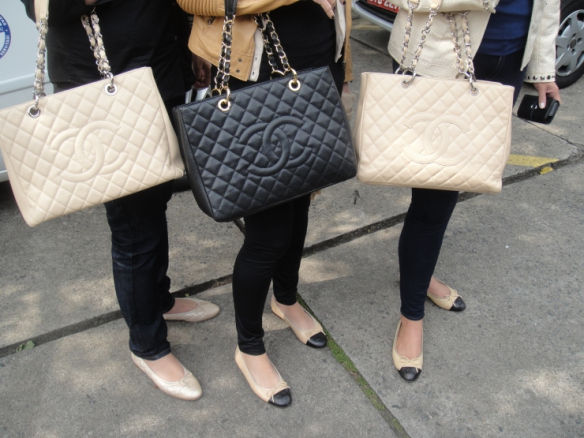
5. Self –Actualization (Issue of GST bag)
Chanel has indeed lived up to the high sustainability and social responsibility standards it has in place, the consumer buying Chanel products can use those products for self-improvement through a high quality of life. For example, having a Chanel Grand Shopping Tote GST bag can give a sense of satisfaction since the Chanel GST bag is no longer selling in the market (Carteret 2018). The limited items help wealthy customers experience a better, more fulfilling life.
4. How Dior understand the Acculturation (Cultural influences on consumption)?PEST Analysis-social factor

Acculturation -There are so many cultural factors that influence the buying decisions of individuals. (Chattalas & Harper 2007,pp. 353-354) Although Dior is a France company they design clothes that are influenced by Parisian style or depends on the inspiration of the collection but still they incorporate some designs in ready to wear that can be still suitable for local regions. For instance, since Dubai is a tourist destination it also caters to other nationalities, so Dubai
Dior is also ordering to cater to the needs of the locals as well as the needs of the tourist. The reason for Arabic women cannot expose any part of their body in the public area due to the cultural diversity and religious belief. Therefore, the size of the dresses needs to be considered for other nationalities needed. But the needs of the jacket still applicable to the middle east regions. This how Dior manages to connect with them even though the brand is a European brand (Ciocoiu et al. 2013, pp. 542-543).
References List
Chanel, (internal source) The Client Experience, ‘Europe Fashion Training’, 2017.
Chanel, (internal source) My Chanel Essentials, ‘The Chanel Difference Training’, 2012.
Chanel, (internal source) New Comers In the House of Chanel, ‘Chanel Corporate Training’, 2012.
Chanel, (internal source) My Chanel Essential Products, ‘The World Of Chanel Training’, 2017.
Chattalas, M & Harper, H 2007, ‘Navigating a hybrid cultural identity: Hispanic teenagers' fashion consumption influences’, Journal of Consumer Marketing, vol.24, pp. 351-357.
Ciocoiu, N, Hincu, D, Dobrea, C, Tartiu, V & Burcea, S 2013, ‘Driving forces of WEEE management: A pest analysis of Romania’, Environmental Engineering and Management Journal, vol. 12, pp. 538-545.
Isabel de Carteret, 2018, ‘Blog of the week: Chanel GST’, Bagista, 15 May, https://bagista.co.uk/blogs/news/blog-of-the-week-chanel-gst
Mitchell, Sarah-Louise & Moira Clark 2019, ‘Reconceptualising product life cycle theory as stakeholder engagement with non-profit organisations’, Journal of Marketing Management, vol. 35, no.1-2, 13-39, pp.15-16.
Schiffman. Leon G & Wisenblit. Joseph L, 2015, ‘The Marketing Concept’,11th global edition, Pearson Education Iternational, Consumer Behaviour, United Kingdom, pp. 32-33.
Zakaria, M & Malek, N.A.A 2014, ‘ Effects of human needs based on the integration of needs as stipulated in maqasid syariah and maslow's hierarchy of needs on zakah distribution efficiency of asnaf assistance business program’, Jurnal Pengurusan, no. 40, pp. 41-52.

Comments